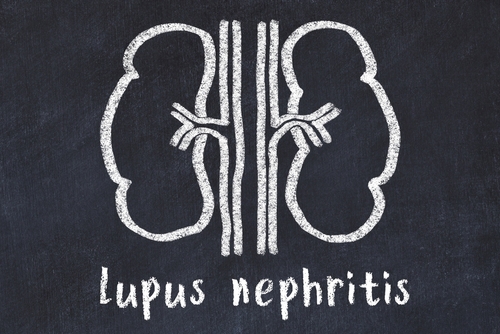
In western countries, there has been a decrease in total dietary fiber (TDF) intake in recent years. Increasing the consumption of foods rich in fiber is recommended in many healthy eating guidelines from public health communities. In patients receiving maintenance hemodialysis, dietary restrictions of potassium and phosphorus and the incidence of malnutrition are the primary contributors to decreased consumption of TDF.
In the general population, decreased intake of TDF is associated with colon cancer, diverticulitis, impaired glucose tolerance, hyperlipidemia, and inflammation. Previous studies, both observational and experimental, have found an inverse relationship between TDF intake and inflammation; chronic kidney disease (CKD) is considered as an inflammatory state, and increased C-reactive protein (CRP) is a strong predictor of morbidity and mortality. Conversely, high TDF is associated with lower risk of inflammation and mortality in both the general population and among patients with CKD; the associations are stronger in the kidney disease population.
Bahar Gürlek Demirci, MD, and colleagues in Turkey recently conducted a cross-sectional, observational, single-center study to test the hypothesis that high TFD intake could be associated with low serum advanced glycation end products (AGEs), and both of these conditions could lead to decreased arterial stiffness in patients on maintenance hemodialysis. The researchers sought to analyze the relationship between the effect of TDF intake on C-reactive protein and on oxidative stress parameters such as serum AGEs, superoxide dismutase (SOD), malondialdehyde, and arterial stiffness by pulse wave velocity (PWV) in that patient population. Results of the study were reported in the Journal of Renal Nutrition [2019;29(2):136-142].
Of 650 patients on maintenance hemodialysis, 128 were included in the study cohort following application of exclusion criteria: lack of regular follow-up data; history of rheumatologic or chronic inflammatory disease of unknown origin, systemic vasculitis; Kt/V <1.4; active systemic infection or hospitalization in the last 3 months; active gastrointestinal disorders; history of peripheral artery disease; severe malnutrition (systemic global assessment group C) and/or receiving oral nutritional supplementation; active smoking; and history of malignancy. All eligible patients received 40-hour hemodialysis sessions three times a week with a high-flux membrane dialyzer.
Dietary habits were evaluated using a 3-day dietary record (including a dialysis day, a weekend day, and a nondialysis day). Patients were stratified by quartiles of energy-adjusted dietary fiber (ADF) as group 1 (n=32), ADF <8.86 g/day; group 2 (n=35), ADF 8.86 to 12.5 g/day; group 3 (n=31), ADF 12.51 to 15.9 g/day; and group 4 (n=30), ADF ≥15.91 g/day.
A Cox proportional hazards model was used to evaluate 19 comorbid conditions to determine a given individual’s overall Charlson Comorbidity Index score. In patients with end-stage renal disease, a higher Charlson Comorbidity Index score is associated with increased risk of mortality.
Mean age of the cohort was 51.9 years, 55% (n=71) were male; mean duration of dialysis was 9.1 years; the etiology of CKD was diabetes mellitus in 25% (n=32), hypertension in 13% (n=17), glomerulonephritis in 13% (n=17), polycystic kidney disease in 5% (n=7), and other in 44% (n=55); mean body weight was 68.8 mg; and mean body mass index (BMI) was 25.4 mg/m2. Mean intake of dietary fiber was 12.65 g/day (range, 3.80-31.1 g/dL), and mean ADF intake was 12.63 g/day (range, 4.20-31.4 g/dL).
Mean ADF was 7.8 g/day in group 1, 10.7 g/day in group 2, 14.1 g per day in group 3, and 18.0 g/day in group 4. The groups were similar in mean values of dietary water, carbohydrates, lipids, and protein deals. The four groups were also similar in terms of age, sex, BMI, duration of dialysis, mean serum hemoglobin (Hb), calcium phosphorus, uric acid, albumin, and lipid profile.
Compared with patients in groups 1 and 2, CRP was significantly lower in patients in groups 3 and 4 (21.7 mg/L, 13.7 mg/L, 8.1 mg/L, and 6.2 mg/L in group 1, 2, 3, and 4, respectively, P=.001) and AGE (6.4 U/mL, 3.9 U/mL, 3.2 U/mL, and 2.9 U/mL in group 1, 2, 3, and 4, respectively, P=.001).
Mean serum SOD levels were 5.4 U/g Hb, 5.2 U/g Hb, 5.9 U/g Hb, and 6.4 U/g Hb, in group 1, 2, 3, and 4, respectively. Upon further comparison with Turkey’s Post Hoc analysis, test for multiple pairwise comparisons, there was a statistically significant difference observed between groups 1 and 4, and groups 2 and 4.
In patients in group 4, PWV was significantly lower than that in groups 1, 2, and 3. In Pearson’s correlation analysis, there was a negative correlation between mean ADF and serum CRP, serum AGE levels, and PWV.
There were some limitations to the study cited by the authors, including the relatively small sample size, the cross-sectional design, using a 3-day dietary diary, and collecting blood samples only once at the time of PWV measurements.
In conclusion, the researchers said, “This cross-sectional study showed that dietary fiber intake is independently correlated with inflammation and oxidative stress. Moreover, increased fiber intake has resulted in improved arterial stiffness. Thus, adequate fiber intake could prevent cardiovascular events and inflammatory processes in patients receiving ongoing maintenance hemodialysis. However, further interventional studies are warranted to evaluate the effects of increasing fiber intake on inflammation, oxidative stress, and its consequences.”
Takeaway Points
- Researchers in Turkey conducted a cross-sectional, observational, single-center study to examine the relationship between total dietary fiber intake and oxidative stress parameters (serum advanced glycation end products [AGE], superoxide dismutase [SOD], malondialdehyde, and arterial stiffness by pulse wave velocity [PWV]).
- Patients were stratified into four groups based on quartiles of adjusted dietary fiber level (group 1, ADF <8.86 g/d; group 2, ADF 8.86-12.50 g/d; group 3, ADF 12.51-15.90 g/d; group 4, ≥15.91 g/d).
- Patients in groups 3 and 4 had significantly lower C-reactive protein and AGE than those in groups 1 and 2. Mean serum SOD level and PWV were significantly higher in group 4.







 © 2025 Mashup Media, LLC, a Formedics Property. All Rights Reserved.
© 2025 Mashup Media, LLC, a Formedics Property. All Rights Reserved.